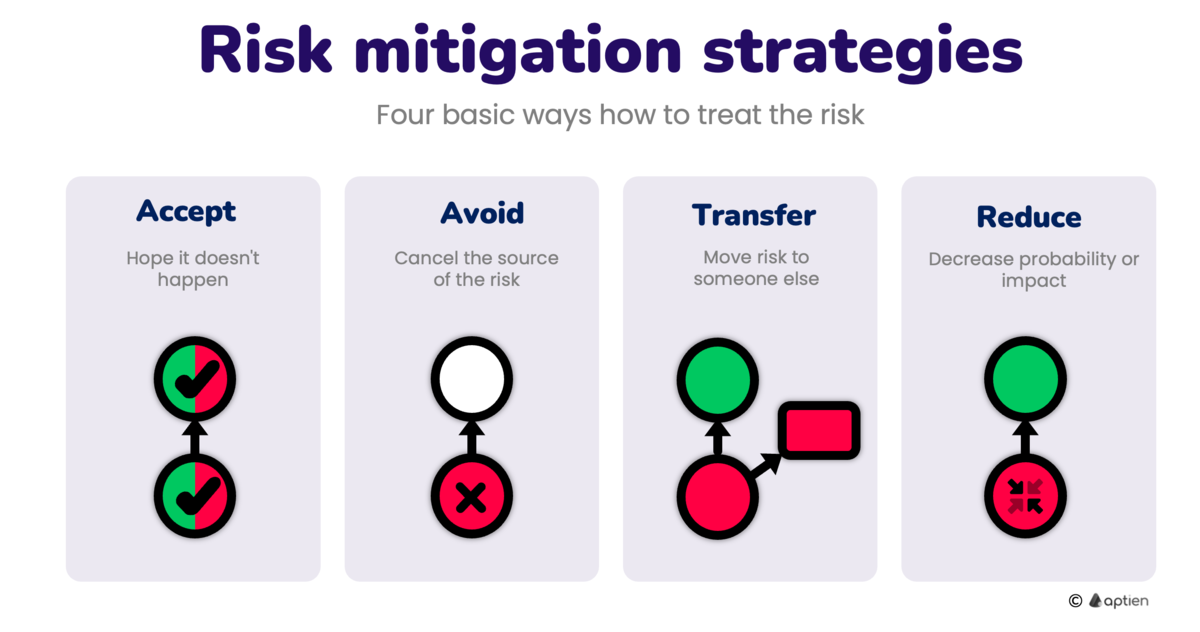Explanation of Risk Treatment Strategies for Business Humans
- Risk treatment strategy is how your business deals with a particular risk, and is the third step in the risk management process. It is about deciding how to respond, the actions you take to deal with each risk.
How to Manage Risks in Your Business Using a Treatment Strategy?
A risk treatment strategy is how your business handles a specific risk. Simply put, it’s the approach you take to address potential threats. Most small and medium-sized businesses use one of these four main methods:
- Accept the risk (and deal with the consequences)
- Reduce or Mitigate the risk (take action to lower it)
- Transfer the risk (for example, through insurance)
- Avoid the risk completely
Risk treatment is also called Risk Response Planning. At this stage, you create plans to reduce risks, set up preventive measures, and prepare backup plans based on how each risk could impact your business. For example, to handle the risk of a fire, a business might keep extra network servers at a different location. This way, operations can continue even if the main servers are affected. You might also develop evacuation procedures for your employees.
Accepting the Risk
Risk retention is the most common way small businesses handle low-level risks. If you don’t take steps to avoid, reduce, or transfer a risk, you’re choosing to accept the chance of loss that comes with it. When a risk is unlikely to happen or the impact is small, accepting it can be the easiest and most cost-effective option.
- Accepting risk means choosing not to act
- You might accept a risk if the cost or effort to address it is too high compared to the potential impact
- Basically, you’re hoping the risk won’t occur or that you can manage it if it does
Avoiding the Risk
Risk is avoided when a company chooses not to accept it. This means simply not taking any action or using any process that causes the risk to exist. In other words, the company eliminates the source of the risk, such as certain processes or assets.
- Example of risk avoidance: If using a specific device is dangerous, then don’t use it. This is a preventive, rather than reactive, approach.
Transferring the Risk to Another Party (or Sharing)
Transferring risk means passing it on to someone else who is better equipped or willing to handle it. In other words, it involves outsourcing the risk to a third party that can manage it or its consequences. This is typically done through insurance policies or by outsourcing certain business activities.
- Examples of risk transfer: insurance, hedging, outsourcing
Reducing the Risk
Mitigating (or control, modify, & reduce). It can be done in two basic ways: through prevention and control. It means to prevent the occurrence of the loss, or to control the severity of the loss if it does happen. It means to put in a live measure reducing the chance that the risk will occur or reduce the impact of the risk. The measure cannot cost more than the losses.
- Examples of risk reduction: medical care for employees, fire extinguisher, using of PPEs, burglar alarms
